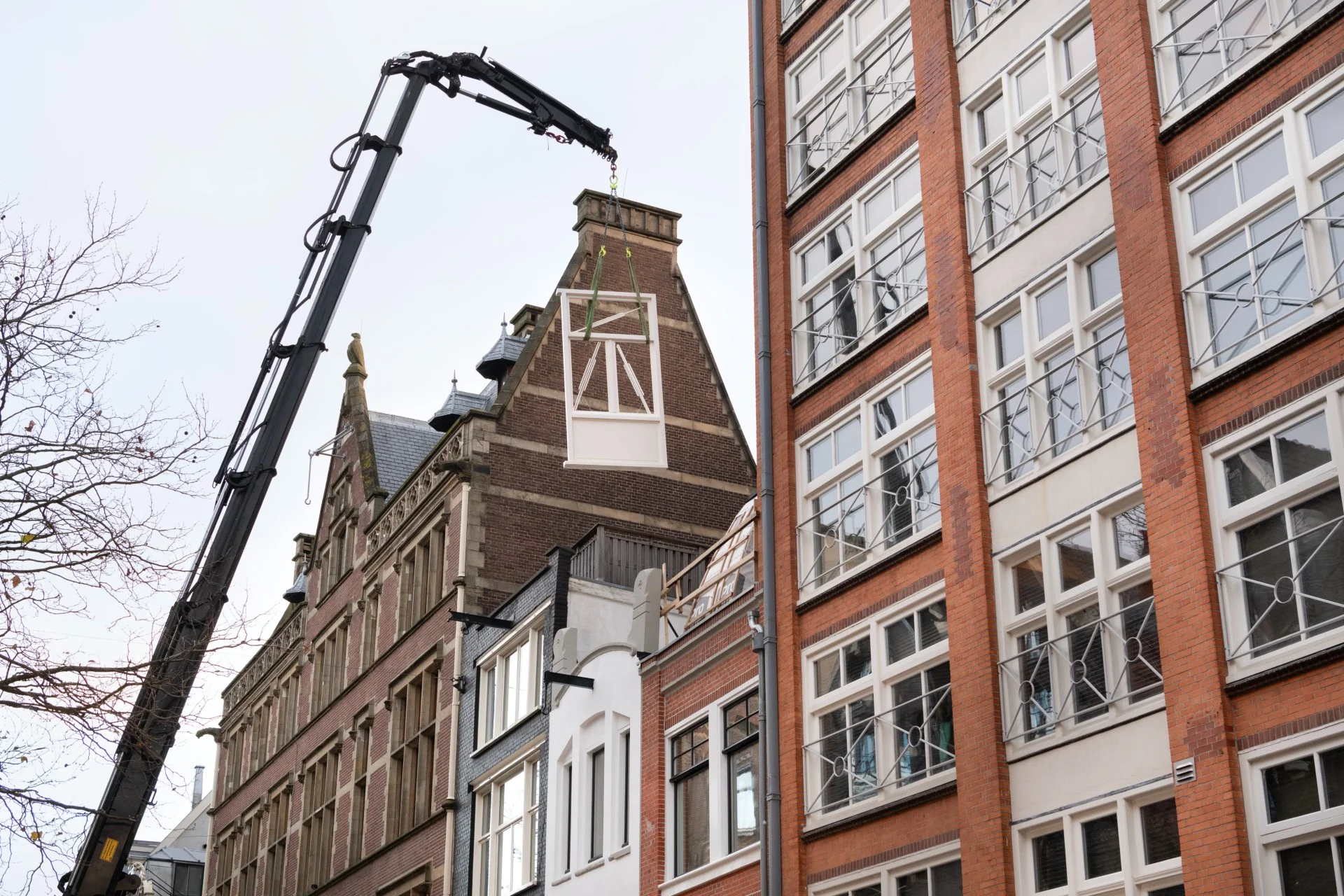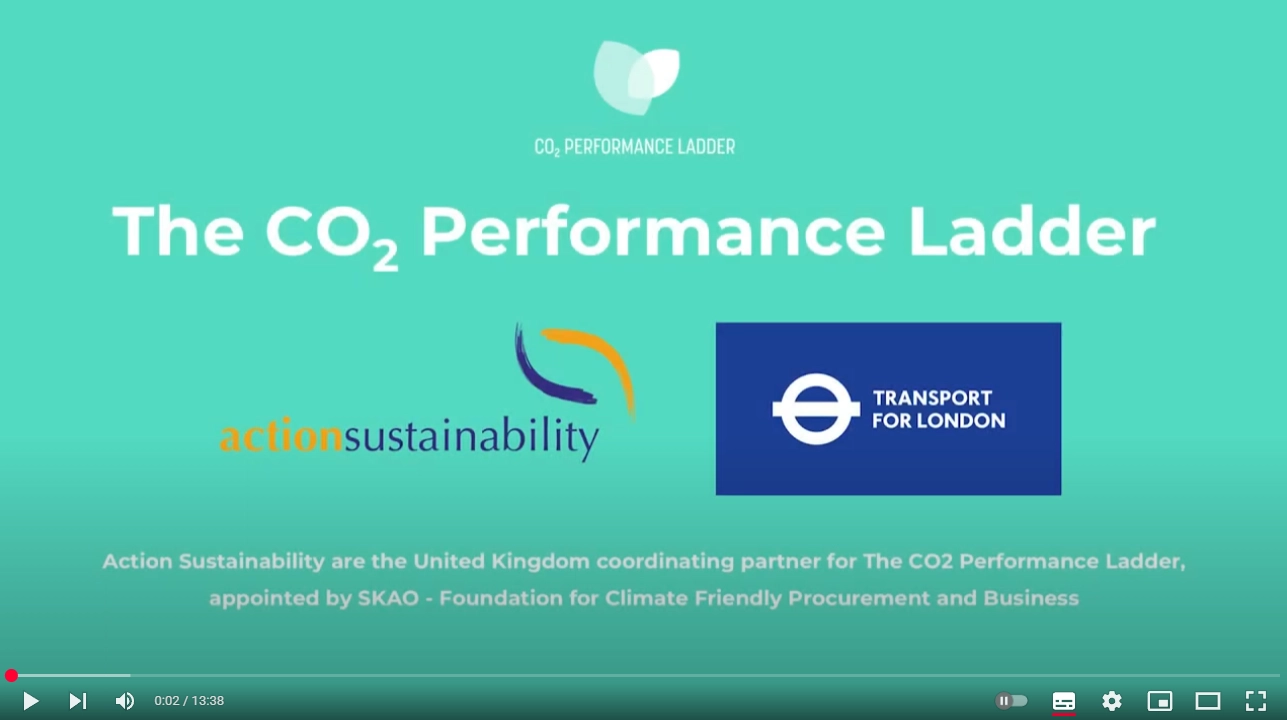Green Public Procurement can play an important role in greening the economy and achieving climate goals. As a government, it can sometimes be quite a challenge to decide exactly how to integrate sustainability in your tenders. The CO2 Performance Ladder offers a solution here. In this article, we explain the advantages of using the CO2 Performance Ladder structurally in tenders.
Sustainable procurement means that as a government, you set requirements or give benefits in tenders to executing parties based on their sustainability performance. Examples include the use of circular materials or limiting CO2 emissions as much as possible.
Benefits of sustainable procurement
Green public procurement contributes significantly to the Gross Domestic Product (GDP). In the European Union, for example, it is 14%. This contribution to the economy makes procurement a powerful way to achieve social and sustainability goals, such as:
Work carried out through procurement currently accounts for about 15% of the world’s greenhouse gas emissions. This makes CO2 emissions through public procurement many times higher than the emissions caused by governments’ own activities. By including sustainability criteria in tenders, you as a government are committed to reducing emissions in the chain. In doing so, you contribute to achieving the national, European and international climate goals, such as the EU goal to reduce CO₂ emissions by at least 55% by 2030 compared to 1990.
- Promoting sustainable development and corporate responsibility
By including sustainability criteria in tenders, you as a government can steer market transitions and sustainable innovations, such as energy-efficient appliances and low-carbon building materials. By doing so, you promote sustainable development, corporate social responsibility (CSR) and corporate climate action. This can ultimately accelerate the transition to a green and circular economy.
Paying attention to CO2 reduction in a tender is also a smart long-term investment. By preventing climate damage now, you as a municipality will spend less money in the future on measures against the effects of climate change. Purchasing products with a longer lifespan also provides cost benefits, as you are less likely to have to maintain or replace them. Life-Cycle Costing (LCC) is a useful method to identify and compare costs over the entire life cycle of an investment.
Criteria for sustainable procurement
In the European Union, procurement is regulated at European level by the public procurement directives. These make it possible for sustainability to be included in the evaluation of public tenders. To help governments do business with companies in a sustainable way, the European Commission has developed a number of criteria for sustainable procurement within the EU: Green Public Procurement (GPP).
Green Public Procurement (GPP)
As a government, you can include GPP criteria in a public tender to reduce the environmental impact of a purchase. The GPP criteria differ by product group, such as electronics, transport, food, electricity and furniture. Although the GPP criteria are voluntary, they are already referred to in several European laws, such as sectoral legislation, including for energy efficiency, clean vehicles and batteries.
Green public procurement with the CO2 Performance Ladder
Despite the increasing focus on GPP in policy, governments often still experience barriers to applying GPP criteria in tenders. In particular, using procurement to drive CO2 emissions reduction and measuring and comparing the environmental impact of goods, works and services are considered difficult. The CO2 Performance Ladder offers a solution here.
Why tender with the CO2 Performance Ladder?
Using the CO2 Performance Ladder in a tender has added value for several reasons.
- Simple tool for assessing bids
The CO2 Performance Ladder is a simple and effective tool for contracting authorities to assess and value bids in terms of carbon management. By using the CO2 Performance Ladder as a quality criterion in tenders evaluated based on the ‘Best price quality ratio’, tendering companies can distinguish themselves. With Ladder certification, a company shows how ambitious it is in terms of emissions reduction and that it has a working CO2 management system that is audited annually by an independent external auditor. Based on the ambition level on the Ladder, bidders receive a (notional) award advantage.
- Proven effective for reducing CO₂ emissions
Research shows that organisations certified with the CO2 Performance Ladder reduce their emissions twice as fast as average. This is because the Ladder has encouraged the purchase of green electricity and the introduction of behavioural measures for more efficient energy use and the reduction of CO₂ emissions. This development is partly driven by the potential competitive advantage in tenders.
- Standard sustainable procurement instrument for the Netherlands and Belgium
In the Netherlands, the CO2 Performance Ladder has been used as a standard sustainable procurement instrument since 2009. After a successful pilot, the Ladder is also being used structurally in Belgium. Pilots are also currently running in five other European countries: Germany, France, Ireland, Portugal and the UK. In total currently more than 300 public authorities use the Ladder on a regular basis in tenders.
- In line with European procurement directives
The use of the CO2 Performance Ladder is fully in line with European procurement law. This procurement law guarantees a free and transparent market and fair competition. This allows the Ladder to be easily used in procurement in other EU countries as well.
- Considered a GPP best practice
In addition, the CO2 Performance Ladder has been recognised as a GPP best practice by the IPCC (International Panel on Climate Change), the OECD (Organisation for Economic Cooperation and Development) and the WEF (World Economic Forum).
How to use the CO2 Performance Ladder in tenders
As a public authority, you can reward tendering companies with an award advantage for their emission reduction measures in a tender project.
Determining and setting award advantage
As the contracting authority, you determine the award advantage. For instance, you can work with a points system or a fictitious discount on the tender price. The higher the ambition level of a company, the higher the number of points or discount percentage. The way you calculate the advantage should be laid down in the tender documents.
Meeting set criteria
Companies registering for a tender with the CO2 Performance Ladder as award criterion indicate the ambition level of the Ladder at which they intend to realise the project.
At the time of tendering, a company does not yet have to be certified. The ambition level must be demonstrated by the contractor within a certain period (SKAO recommends 1 year) after the award and during the duration of the project. This can be done in two ways:
- By issuing a project statement, in which a Certifying Institution (CB) declares that the company’s specific project meets the set criteria, or
- By issuing a ‘CO2-aware certificate’, in which a Certifying Body declares that the entire implementing organisation, including the specific project, meets the requirements of the Ladder.
Here you can read more about how to use the CO2 Performance Ladder in a tender. Do you have any questions about this? Then contact us.
Sustainable procurement with the CO2 Performance Ladder
By using the CO2 Performance Ladder in tenders, you can focus on sustainable procurement of works, products and services. As a public authority, you will thus contribute to the transition to a green and circular economy and the achievement of climate goals. The Ladder is in line with international guidelines, is considered best practice by several authoritative organisations and has been scientifically proven effective.


